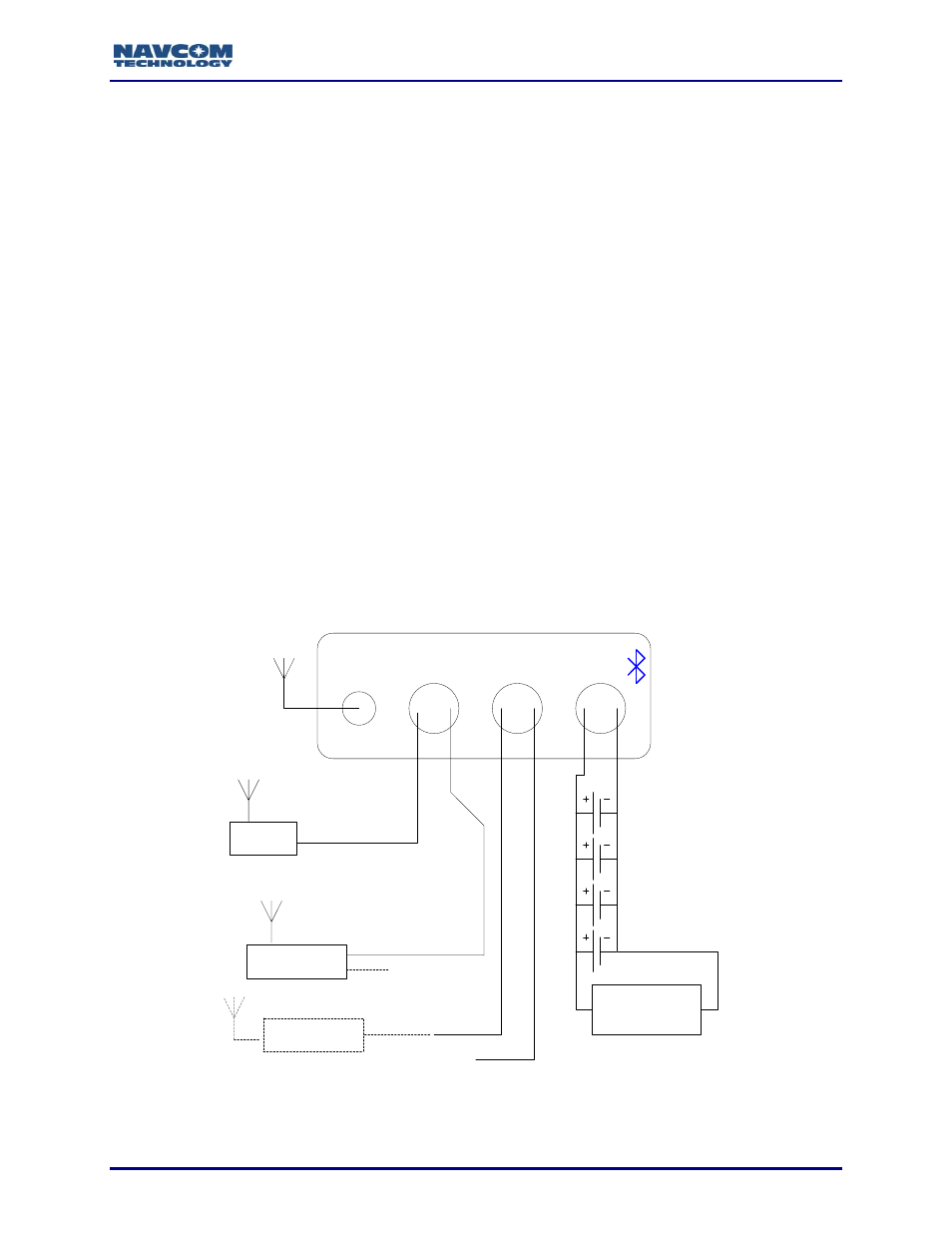Hardware configuration, Figure 15: typical network installation – NavCom Sapphire Rev.J User Manual
Page 420

Sapphire Technical Reference Manual Rev. J
420
Hardware Configuration
The below diagram (see Figure 15) depicts a typical installation:
Com 1
– used for NCT formated correction output; baud rate is 19200 bps
Eth1
– Ethernet 1 is assigned port ID of 4361 and is used for command and control with
StarUtil. The user has an option to change the port ID as needed.
Eth2 and Eth3
– Ethernet 2 and 3; both are unassigned. The user has an option to change
the port ID as needed.
Eth4
– Ethernet 4 is assigned port ID of 4364 and is used for output of RTK (RTCM v3.1)
network corrections to SmartNet, Geo++, eGPS, etc.. The user has an option to change the
port ID as needed.
SmartNetAus indicates that every SF-3050 in the network can maintain the settings
above and be uniquely identified by the radio modem router. This eases installation,
as no changes are needed to the default network RTK profile for connectivity.
Com 2
– used for command and control with StarUtil; default baud rate is 57600 bps
As an option Com 2 can be connected to output RTCM, CMR, or CMR+ correctors
and StarUtil can be connected to a different port (USB, Ethernet, or Bluetooth)
USB
– used for command and control with StarUtil
SF-3050
ANT
COM1/LAN
COM2/USB
PWR
Com 1 NCT
0x5B
0x5C
0x5D
0x5E
400MHz
GSM
Ethernet: 4x Virtual Com Ports
Cmd/Ctrl Port 4361
Ports 4362 & 4363 Unassigned
Network RTCM Port 4364
Pacific Crest
(or other radio)
USB
Cmd/Ctrl
Rover or
Choke Ring
Antenna
Solar Panel
Charging System
Bluetooth
Cmd/Ctrl
Com 2
Cmd/Ctrl
Or
CMR+
Metrology
Other site data
Figure 15: Typical Network Installation
